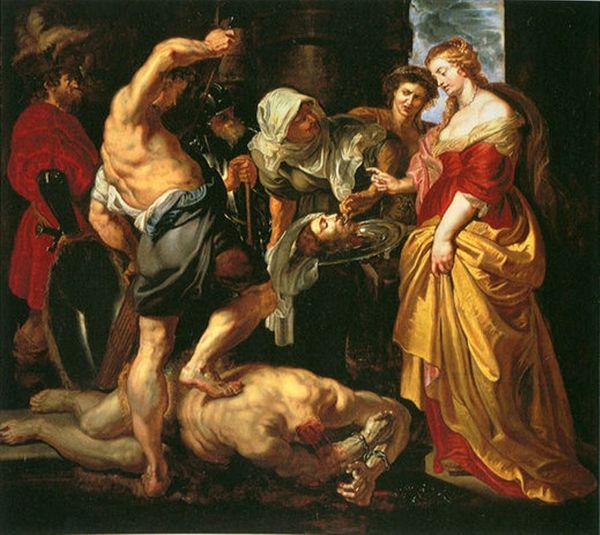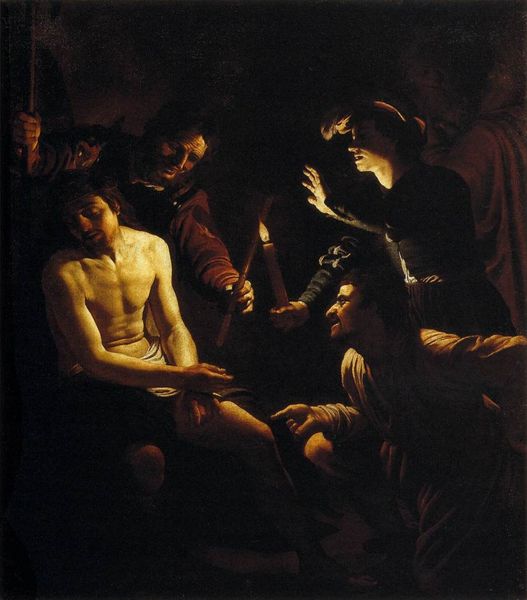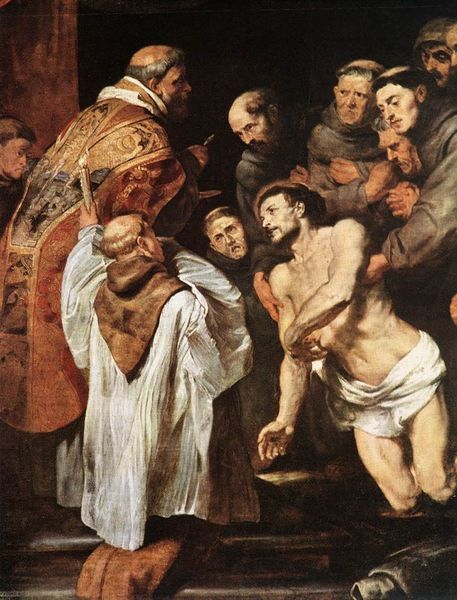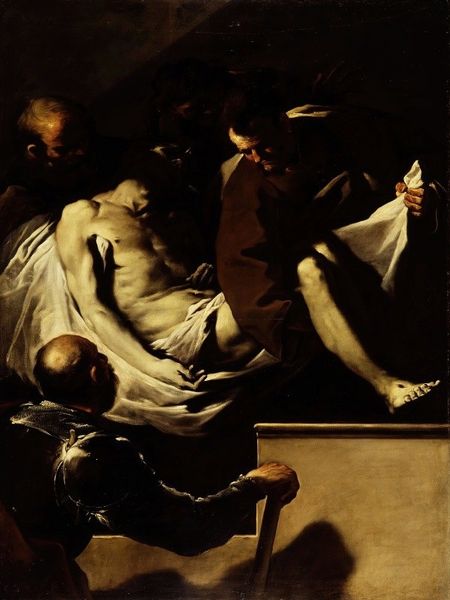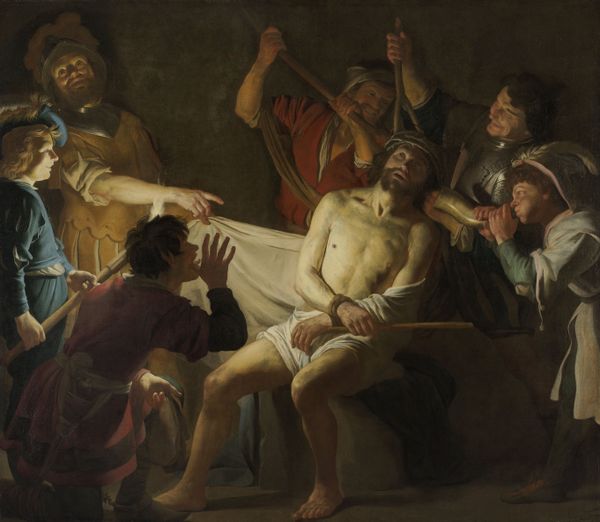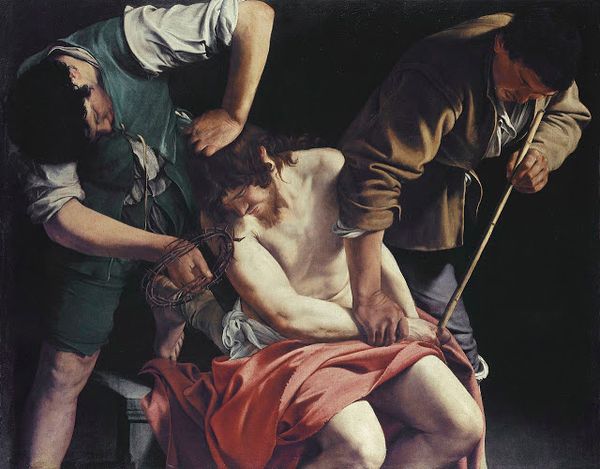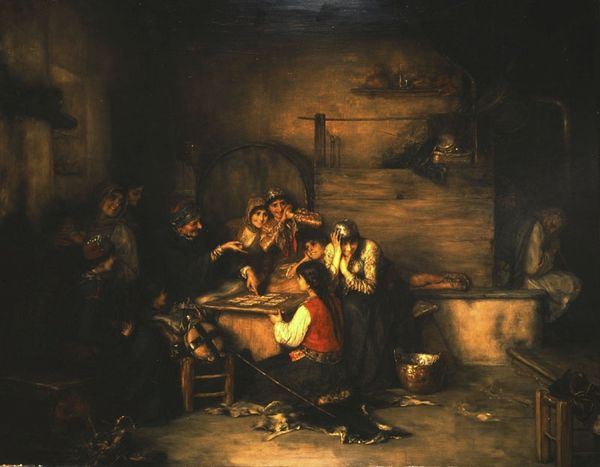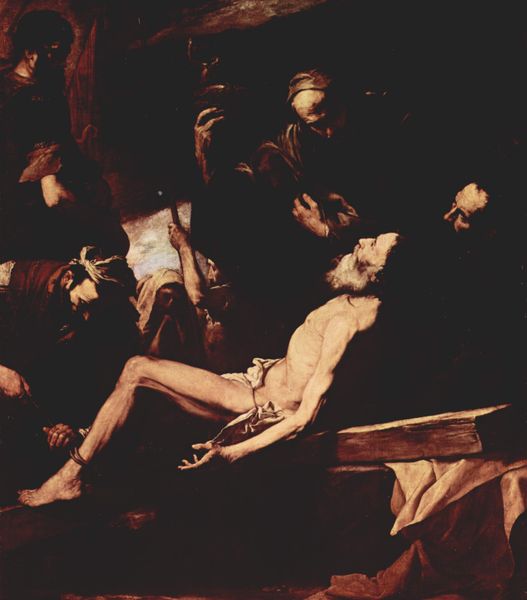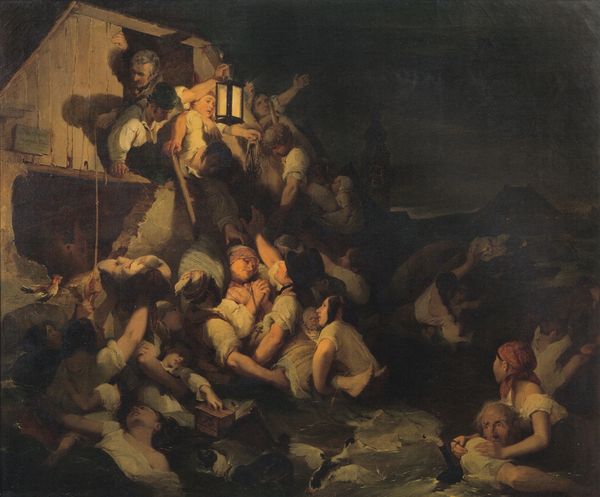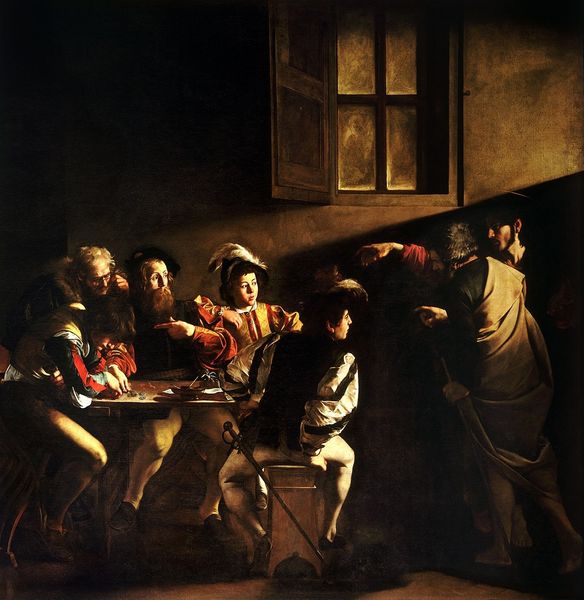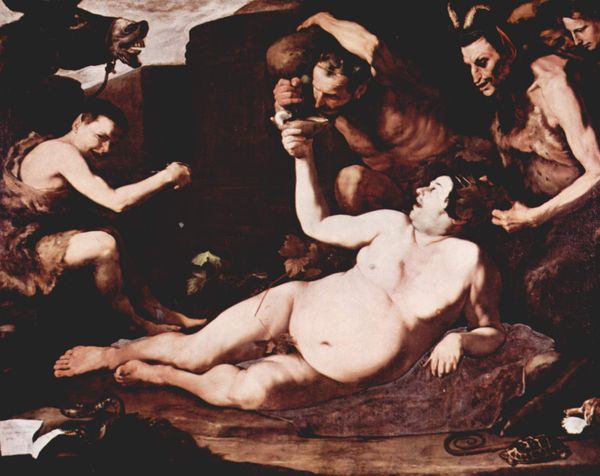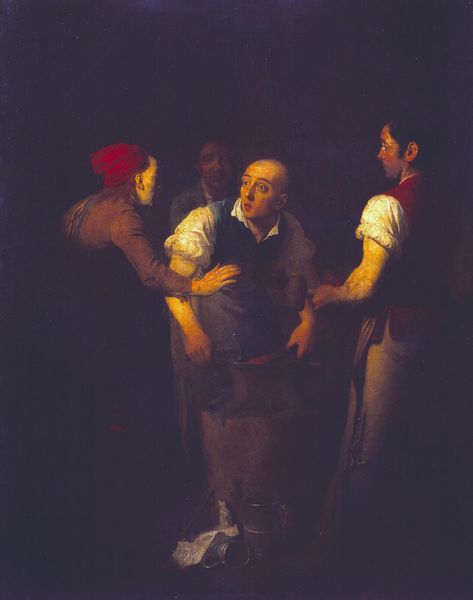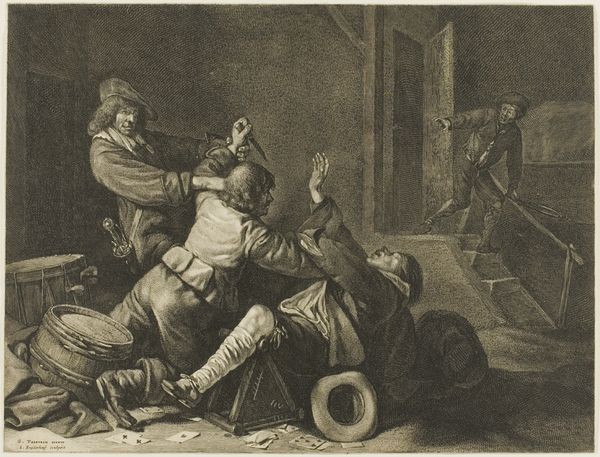
The Murder of Andreas Baader 1978
0:00
0:00
oddnerdrum
Astrup Fearnley Museum of Modern Art, Oslo, Norway
Copyright: Displayed with the permission of the Nerdrum Museum (http://nerdrummuseum.com)
Curator: Looking at this powerful painting by Odd Nerdrum, titled "The Murder of Andreas Baader," created in 1978 and held here at the Astrup Fearnley Museum of Modern Art, my immediate reaction is to think of Caravaggio – that stark, dramatic lighting! Editor: It’s oppressive, isn’t it? A grim palette, claustrophobic composition. You can almost smell the oil paint, the sweat, and the desperation. Curator: Nerdrum engages with history here, depicting the controversial death of Andreas Baader, a leader of the Red Army Faction. The painting uses this dramatic chiaroscuro to create an almost operatic intensity, reminiscent of Baroque history paintings. It immediately raises questions about power, violence, and the state. Editor: Power, yes, definitely. And the physical struggle evident in every brushstroke. Look at the way Baader’s body is being manhandled. The emphasis on his bare torso directs our gaze, doesn’t it? You see the weight of his body as he's being dragged down. Consider the materiality of struggle – how violence imprints itself. It's all texture and tension here. Curator: The political dimensions are impossible to ignore, of course. This was such a contested event – whether Baader’s death was a suicide or, as Nerdrum depicts here, a state-sanctioned execution is something this artwork directly engages. This asks us to consider radical narratives and the state's power in silencing dissent. Editor: And the process by which images like this, these "alternative facts," are crafted. How does Nerdrum's technical facility lend credibility to his interpretation? We should consider his manipulation of light, form, and especially the visceral quality he achieves through oil paint – to understand its effectiveness. It makes one wonder if this level of skill helps his account more than what is deserved. Curator: Perhaps so, and it demands we consider the social context surrounding this highly contentious historical event. What are the ramifications of translating violence through something as seemingly inert as oil on canvas? Editor: Yes, the sheer density of the paint seems to weigh everything down with a kind of…fatalism. It’s not just representational, it feels like the painting embodies the crushing force it depicts. I find the materiality really gives an atmosphere, making it more engaging. Curator: So while I examine this in its narrative role of social discourse, you interpret it in its actual build to explain what affects us. Thank you for helping our patrons understand the significance of it. Editor: Glad to look into it, now let's consider its lasting imprint as more than a statement. The canvas is an archive with layers we could peel for days to examine our future.
Comments
No comments
Be the first to comment and join the conversation on the ultimate creative platform.
